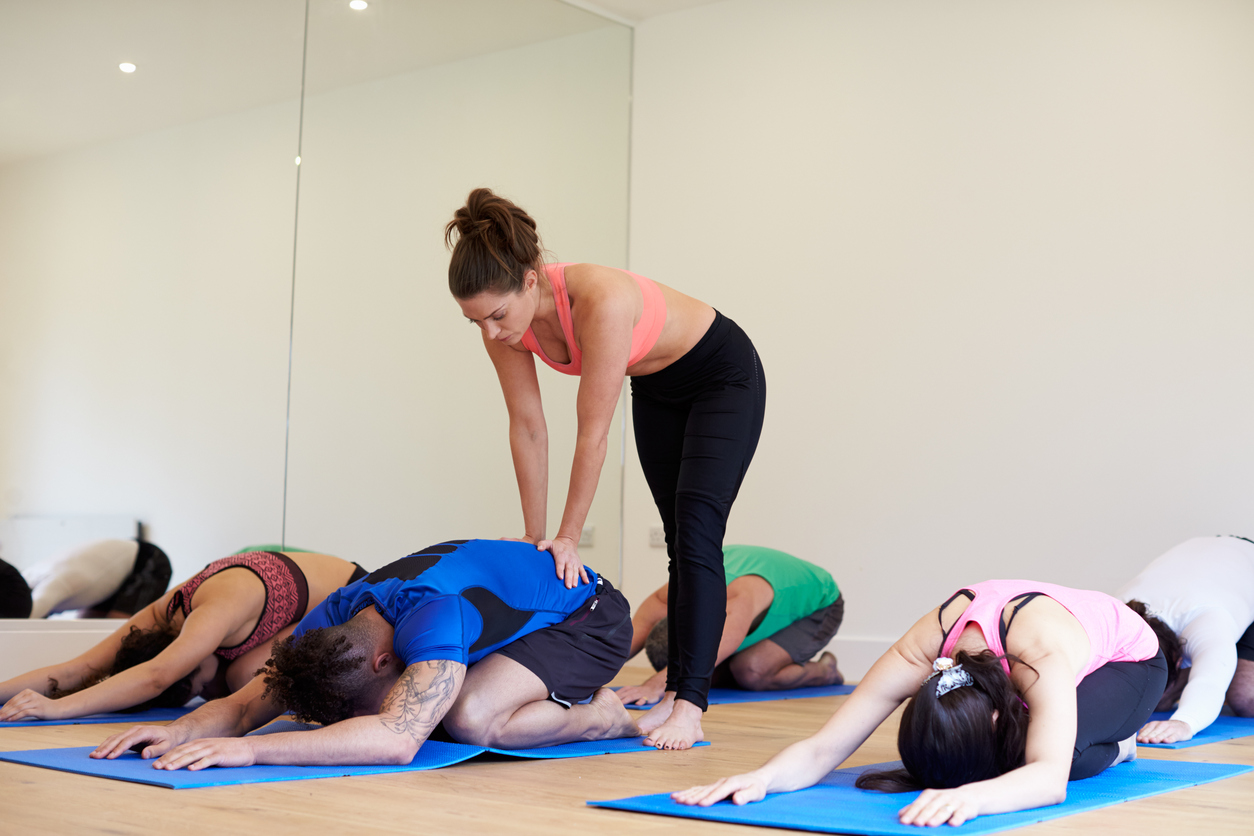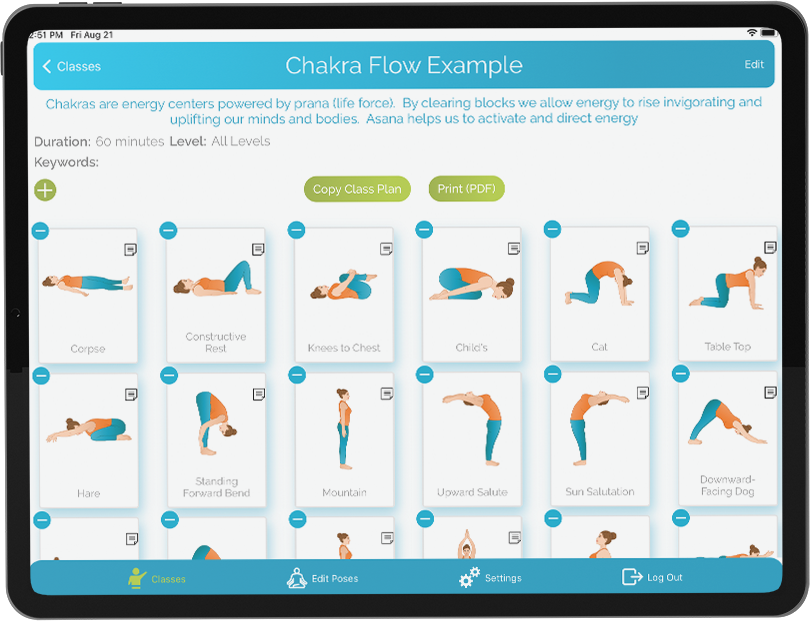10 Marketing tips for Yoga Teachers (new & old)
December 5, 2016 | 6 min read
The Yoga in America 2016 Survey found there over 37 million people currently practicing yoga in America. While that may seem like great news for Yogipreneurs and teachers, there’s a big difference between knowing those clients are out there and getting them into your class. If the idea of marketing and sales sends you into Savasana, you are not alone. Many yoga teachers struggle with selling themselves because they don’t where to begin or how much to spend. Marketing does not have to be a competitive, costly venture. Certainly, a quality website and glossy brochures will provide you with a professional polish, but they may not get you more students. In fact, the Yoga in America 2016 Survey notes, that more than half of people who try yoga, do not continue. The key to building a sustainable career teaching yoga, is therefore, to attract and build a following. Below are 10 marketing tips to help you get started.
- Shift from classes to courses: Eva Norlyk Smith, PhD and founder of Yoga U Online advises structuring a course around a learning theme to attract and build a following that better meets the needs of your students. ’ To support her rationale, Ms Smith points out that lapsed yogis surveyed by Yoga in America 2016 statistics, cite convenience, cost and experience as barriers to practice. Dr Smith believes yoga courses force students to make a commitment of regular classes for 6-8 weeks. Additionally, she adds, a “themed course allows you to stand you out from the crowd and be unique”.
- Meet the needs of your clients: Three out of four of the 37 million Americans who practice yoga on a weekly basis are women. That may not surprise you. However you might be interested to know that 48% of yogis are over 40 years old and another 21% are 60+. So glossy brochures with beautiful photos of adorable cuties in pretzel twist poses may not reach your clients. In fact the key challenges for this group include lack of body awareness and lack of flexibility. Marketing your course as Yoga for beginners, is according to Dr Smith, a motivation killer, “No one wants to be called a beginner (at anything)”.
- Create opportunities to reach your market: Fifty percent of yogi’s surveyed by Yoga in America 2016, cite improving health as a reason to start practicing yoga. So half of the population over forty is looking to be well. That means your themed classes should address those concerns. Yoga for a healthy back, Yoga for flexibility, Yoga for posture, Yoga for strength, wellness and relaxation are all brands that could potentially capture this market.
- Offer something that students will not get from regular yoga classes: All levels and drop-in classes have their place. They are a great way to maintain a practice. The least experienced yogis however get very little from these classes and quickly fall by the wayside. An eight-week course designed around a special theme provides a take-away in the form progression. This may be improved posture, body awareness or breathing techniques for stress. Your students will see and believe in the results. This is the magic that creates brand loyalty.
- Keep the cost low: Studio memberships and drop-in classes can often be expensive. By contrast, an eight-week course for $95, averages out to an affordable $12 per class. This will off-set, their reluctance pay before the course begins. It is important therefore to include a curriculum with any marketing materials. That way they know exactly what they are paying for. Additionally you can assure them that pre-payment encourages commitment. “Students who have paid in advance”, says Dr Smith have good reason to attend every class”.
- Build on your theme: When designing your course, Dr. Smith recommends carrying the theme throughout each class and for the entire eight weeks. For example, a course themed around a healthy back, would begin with a 10-15 minute talk, highlighting those aspects of yoga for the back, to be practiced that evening. You do not have to design an entirely new sequence each week, but you will want to provide a different focus, such as flexibility, strength, relaxation. Alternately, you might want to play with different scaffolding exercises such as pelvic tilt exercises to build flexibility for backbends and forward bends.
- Be Consistent: Studio classes are a pick-n-mix of changing teachers, styles and clients. Designing a curriculum that shows your students exactly what they will be getting in every class for the next two months will gain you a loyal following. Dr Smith’s successful format is designed around eight weeknight sessions with two Saturday afternoons of 1.25/1.5 hours each. Don’t worry it’s all been done. Satisfied students will sign up for the second series if there is progression. Thin Yoga for a healthy back followed by Yoga for a better posture or yoga for healthy aging.
- Think Convenience: Location, location, location is so important to attracting and keeping those hard to reach yogis. Easy access, plenty of parking or access to public transportation/cycle paths and walkways is so important. I can’t remember the number of strip mall yoga studios, here today and gone tomorrow that have failed because they are inaccessible and poorly placed. Most over 40’s do not want to practice yoga at a truck stop. Your town center, community hall or gym would provide a better space with more out- reach opportunities. This way, you can plan your registration days to coincide with local events, evening classes or gym hours.
- Reward Loyalty: Give returning students a 10% discount off series two. Alternatively you might offer make-up classes to students who missed one or two from series one. Free talks and invitations to yoga-themed events around the holidays are also a way to reward your clients. Thin raffles to win a free class, yoga mat or smoothie at the local juice bar. Everybody, even yogis love a freebie.
- Keep a mailing list: It’s important to maintain an up-to-date email list of all your clients and potentials. Email marketing is the most cost effective and powerful method of staying in touch with your audience. You should always bring a sign-up sheet to registration days, events and classes. This way you can promote your courses and share yoga tips, blogs or online yoga to your followers. Keep it short, but stay consistent with a weekly message.
My final tip, is to ask your students for written, audio and/or video testimonials. You can create a contest for the best testimonial and offer a discount or free private class in exchange for their time. Podcasts are wonderful ways to encourage new clients. Seeing is believing and hearing exceptional praise is a much better marketing strategy than slogans or commercial copy. Students love hearing about other peoples experiences. You do not need expensive marketing materials to attract students to your classes. Dr Smith and her husband placed an ad in the local paper, twelve people showed up. That is where to start, at the beginning.
Brenda Hamlet is a RYT 200 yoga teacher and journalist. More information about Brenda can be found at https://www.facebook.com/brendahamletyoga
Posted in Marketing Tips




